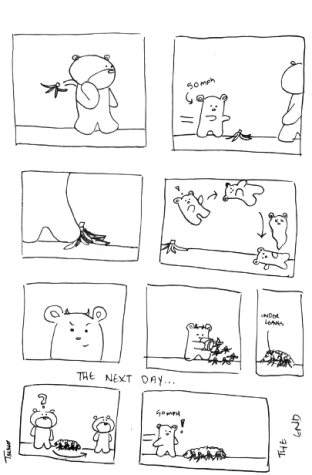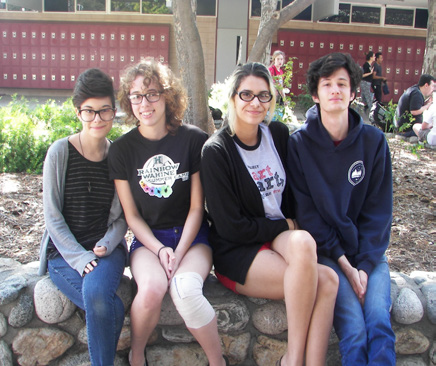Dark Days Ahead For Photography Department’s Darkroom
In the same manner that a dance studio can act as a sanctuary for a dancer, a darkroom — a room for the development of photographs taken with actual film — can provide solace for any photographer. During this previous summer, a decision involving CUSD made it certain that CHS’s darkroom was permanently closed. The Photography Department was given $1,800 to buy laptops that are being used to do the work of a darkroom digitally. Although saddening to some, the closing of the darkroom is a necessary measure. During the summer, as part of a CUSD administered check regarding safety regulations, it was found that the darkroom was not up to safety standards.
“The administration had no choice,” Beginning Photography teacher Bruce Pottorff said. “It was discovered that the darkroom was not built up to code, as the electrical and ventilation systems as well as emergency exits were inadequate. It was a matter of student safety.”
Although there were justifiable reasons for the closure of the room, students as well as teachers were less than thrilled about the news.
“I feel like it’s such an important part of our program, and to not have it anymore makes it so we’re just like any other school now,” Advanced Photography teacher Melissa Wonacott said.
In the darkroom, students can edit their film in a tangible way. It serves as a hands-on method to editing photography. Such processes can provide a more authentic learning experience than simply using an editing software or an app. In a darkroom setting, students are given the chance to really see their work progressing. Rather than changing the lighting on the photo with a couple taps, the darkroom gives students the opportunity to physically alter their photos to perfection. Before its
closure, the darkroom gave students an opportunity to explore the world of non-digital photography. It taught them about the complexities of their cameras, which would enable them to use any camera of their choice. The existence of the darkroom helped students understand the importance of key photography principles, such as the concepts of lights and darks and exposure. The dark room demonstrated these techniques above the level of the current norm in a way a laptop cannot.
Many high schools have been getting rid of their darkrooms for multiplereasons; whether it is because the school could no longer afford the space, or because its safety codes were not up to standard, the number of high schools with darkrooms has been diminishing. The prior preservation of CHS’s dark room made the campus unique. Such sentiments were especially pertinent to photography students, especially those who are interested in pursuing photography in the future. It gave them a space where they could be creative and have their own safe haven on campus. Many students were disheartened when they found out about the closing of the dark room but were open to the new digital form of photography that would be taught.
“Last year, I did Photography, and it was so fun. The dark room was my favorite,” photography student Cassidy Heller said. “We did one project on the computer using Photoshop, and I hated it. It was boring, and I felt like it is not what we should be learning in Photography. When I got into Advanced Photography this year, and Ms. Wonnacott told us we wouldn’t
be using the darkroom, I got sad and didn’t want to take the class anymore. The dark room is the most important part
of photography. We need it.”
Although many may still feel upset about the closing of the darkroom, talk of the construction of a new and improved one is already in the works. All signs point to the making of a better, safer darkroom that can be enjoyed by all.
Hello there! Our goal is to provide relavent, engaging journalism for readers of all ages. Your donation will support the student journalists of the Wolfpacket at Claremont High School, and will allow us to purchase equipment, print our monthly issues, and enter in journalism competitions. We appreciate your consideration!





